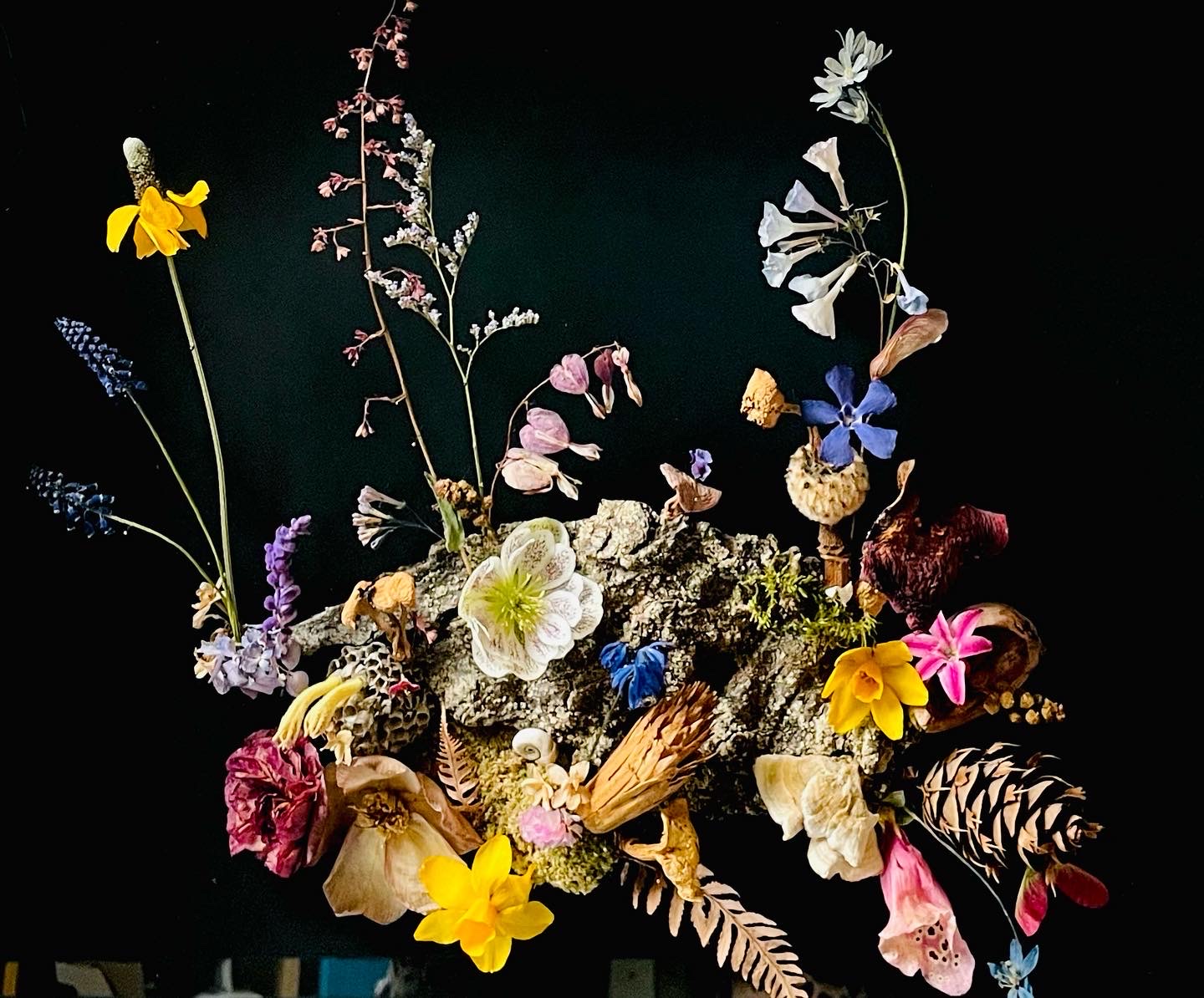A few weeks ago, the result of a community art project was unveiled at Anita Purves Nature Center. The art piece was created by Cris Hughes of Secret Gardens CU with items foraged and donated by members of the community. The project was a collaboration between Hughes and Julia Pollack of the Art of Science program at the Carl R. Woese Institute for Genomic Biology. I first learned about Hughes’ artwork through this project, and was fascinated when I learned she is also a forensic anthropologist. I recently corresponded with Hughes, who has lived in Champaign-Urbana now since 2009. We discussed the challenges of the community art project, the origins of Secret Gardens, and what forensic anthropology has in common with her art. Here’s how that conversation went:
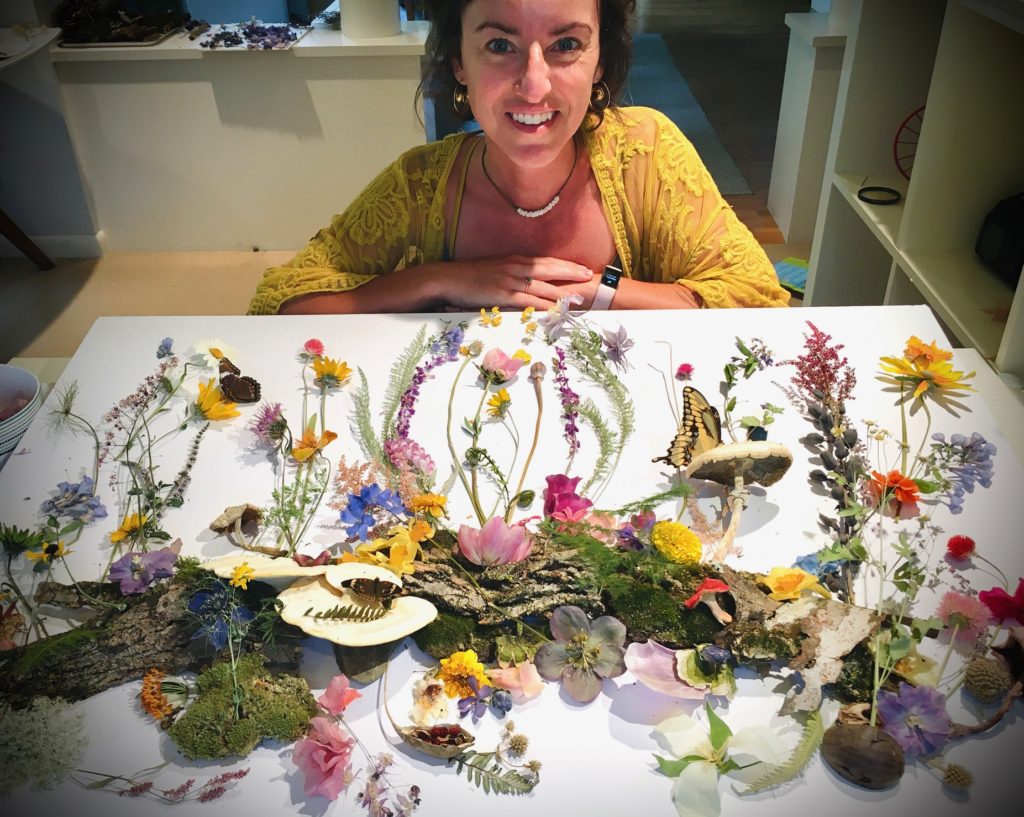
Some responses have been edited for length and clarity.
Smile Politely: How did Secret Gardens CU originate?
Cris Hughes: Secret Gardens CU came about in 2016 during the spring. I had just given birth to my daughter and we were doing tons of walks around the neighborhoods, and I was overcome with those spring flowers popping up everywhere. Around the same time, I had discovered the work of artist Anne Ten Donkelaar, who does collage work with mini cut-out photographs of flowers. Her flower photographs were so good that I actually thought they were real flowers that she had somehow preserved in three dimensions, so I started researching online how to preserve flowers in that form. But the joke was on me, because even though I learned some awesome techniques, I eventually found out that most of her flowers used in my favorite pieces were 2D cutouts. I had studied art in college, but had had to drop that major to focus on my second major of anthropology. It felt so good to be getting back into art technique, and I had always been interested in nature and plants, so it felt nice to be interacting with them in other ways than just growing.
SP: Has anything changed for you in your process or approach since you first started?
Hughes: Definitely. It was a completely new art form for me, so the learning curve was huge. At first my recovery rate for my process of drying was pretty low, like 50%. It took a long time to figure out how to lay the flowers in the drying medium just so to make them look alive, and which flowers worked better in the drying compared to others. Now I’m up to almost 99% recovery of any flower I try to dry which is very exciting. The art form itself has changed a little bit for me — early on the pieces were not as dense, and I typically worked on a white background. Someone asked me if I ever did black backgrounds, and at first, I was like “meh I guess I’ll try it out” not expecting much, but then the effect blew my mind. It really made the pieces feel like they drew you in and held your focus, not to mention the vibrancy of the colors against that dark background. What hasn’t changed over time is the thrill I get every time I finish a piece or I’m uncovering my flowers from their drying bins to see how they look.
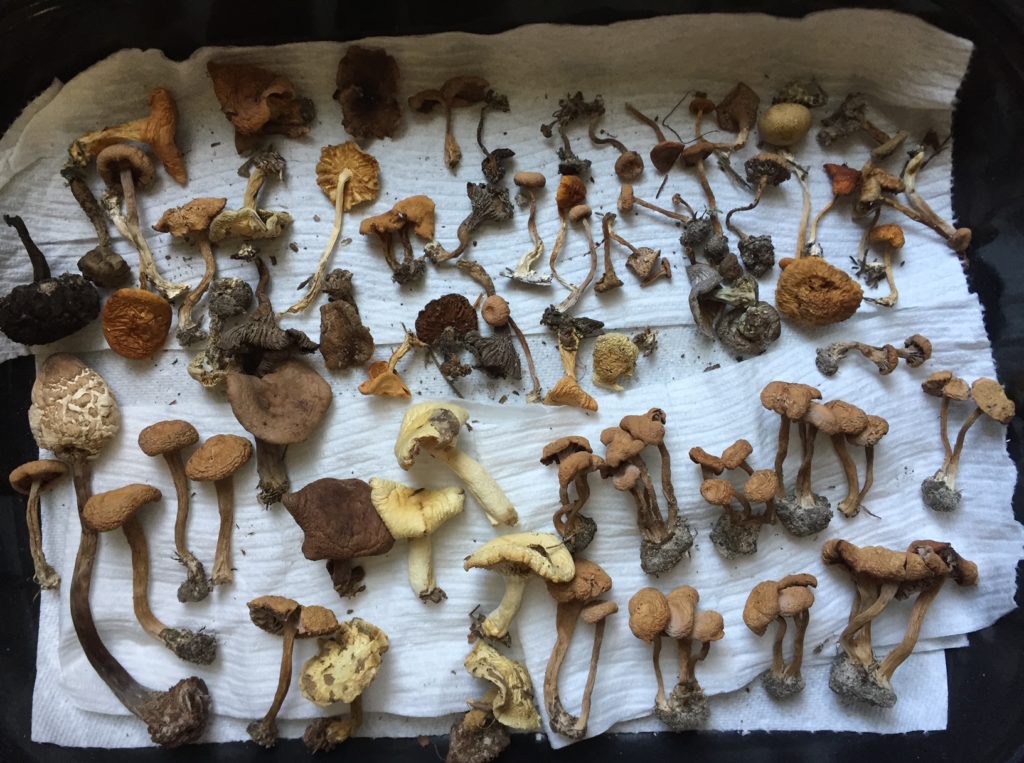
SP: Do you go out looking for specific flowers or items with a composition already in mind or are you inspired by the items you forage? How far in advance do you gather items before they make it into one of your art pieces?
Hughes: The only thing I really do as a targeted search is finding butterflies since they are so hard to find and very seasonal. I only collect them dead or dying, and the ones that are dying I try to revive. Typically, I can find them in the late summer months out by the farmlands, so when late August rolls around I know that I need to start doing bike rides and checking the sides of the roads for a little flashes of color.
Beyond foraging, I’ll see flowers in my neighbors’ yards or in nature that I love so I’ve started growing them in my own yard. I still have flowers that I’ve collected years ago that I might put into a piece today. It’s really just about getting the exact right shape and color and size flower that will complement what else is in the composition.
SP: How does your work as a forensic anthropologist intersect with your work at Secret Gardens CU?
Hughes: I haven’t wanted to really see it myself for a long time given that I do try to compartmentalize my forensic anthropology work in my life, but friends who pay attention have noted that both are a way to think about/engage with death and dying. The act of preservation itself, or collecting something when it’s fresh and drying it really is about life and death. The other shared aspect is the hyper focused, detailed approach that both require. I did a show with 8 to Create on campus where the community comes out to see the artists work for 8 hours straight to learn more about their process. Many people commented on how delicate and focused the work is, and it’s something I didn’t really recognize about the art form, but when you’re hunkered over working with tiny pens and flowers for hours at a time, it really is a detail-oriented process. I think I didn’t realize it because I’m used to that style of work being a forensic anthropologist, where I have to be micromanaging myself to attend to quality assurance standards and have to be delicate and detail oriented when examining skeletal evidence.
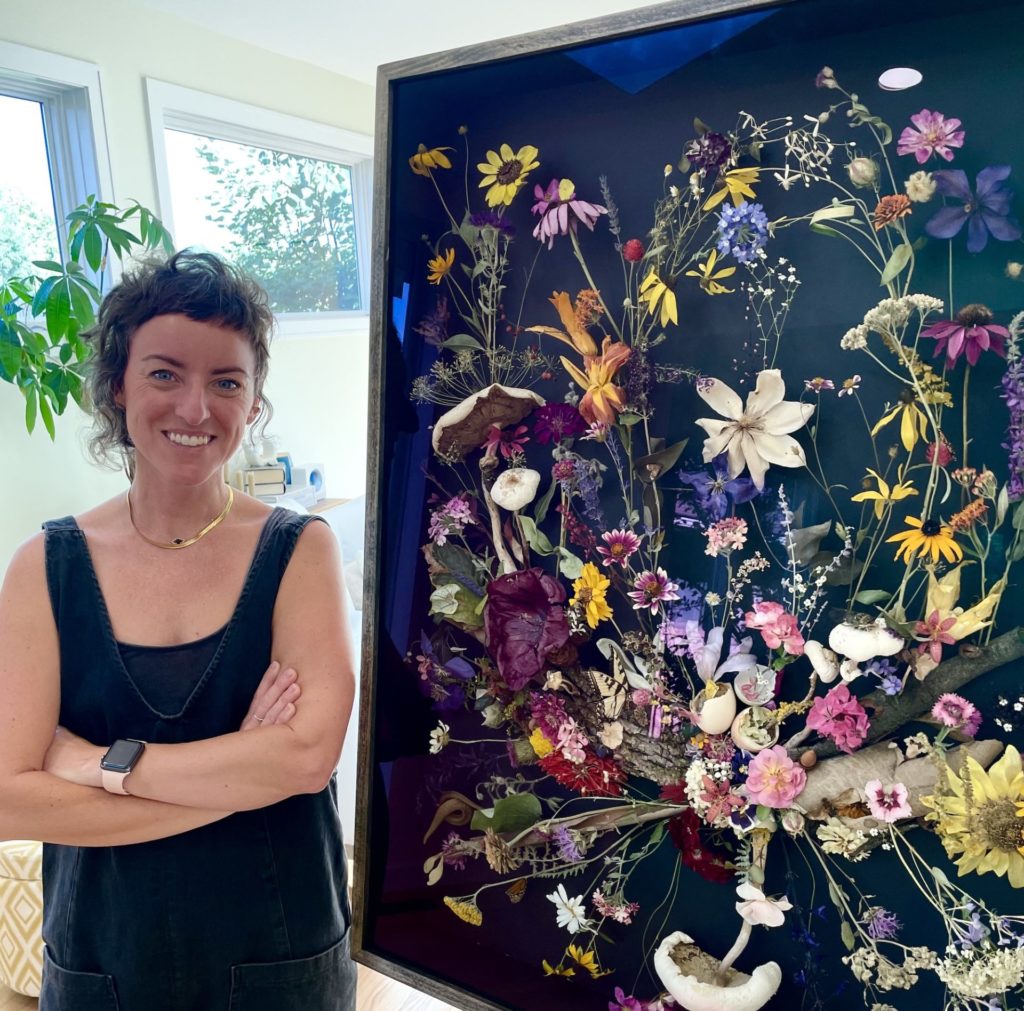
SP: I know you just had the unveiling of the community art project — it is stunning! Can you tell me about the origins of the project and your process for creating the final piece?
Hughes: For me, the project’s inspiration really came out of all the beautiful interactions I’ve had with folks at art events and art markets over the years. I felt so inspired in particular by a couple who gave me their entire entomology collection that they had collected with their kids almost 30 years ago. They had stored them beautifully and I’ve been able to make use of the hundreds of insects in many of my pieces (as well as a few for them!). That generosity and enthusiasm for the art form really sparked me wanting to do a community-oriented piece where everybody could contribute something and share in an experience of a single art piece representing everyone. I’d been sitting on this idea for a year or two when I learned about the Urbana Arts and Culture Grant opportunities, which I felt were a perfect fit. To have gotten a grant from them in 2023 for this project really made a dream of mine come true. I don’t think I ever would have gotten around to doing the project without that incredible resource.
SP: What was your favorite part of the community project? Did it present any unique challenges?
Hughes: I loved being challenged to work in the large format! For this piece I knew I would need to go big, so I reached out to local artist Nathan Westerman to see if he would be willing to craft a custom wood shadowbox. In such a large format, creating balance across different parts of the composition is extremely challenging when you can’t stand back far enough to get the whole piece in your view at once. So that was a major challenge — I would be working on one little section and trying to make it look interesting in its own right, but also balancing it out with the rest of the composition.
My favorite part of this community art project was getting to see peoples’ reactions at the opening exhibit. There were gasps, and joy, and even tears from one person (good I promise!) and that just solidified for me that I had done right by the community and that they felt my own energy and love that I had put into it.
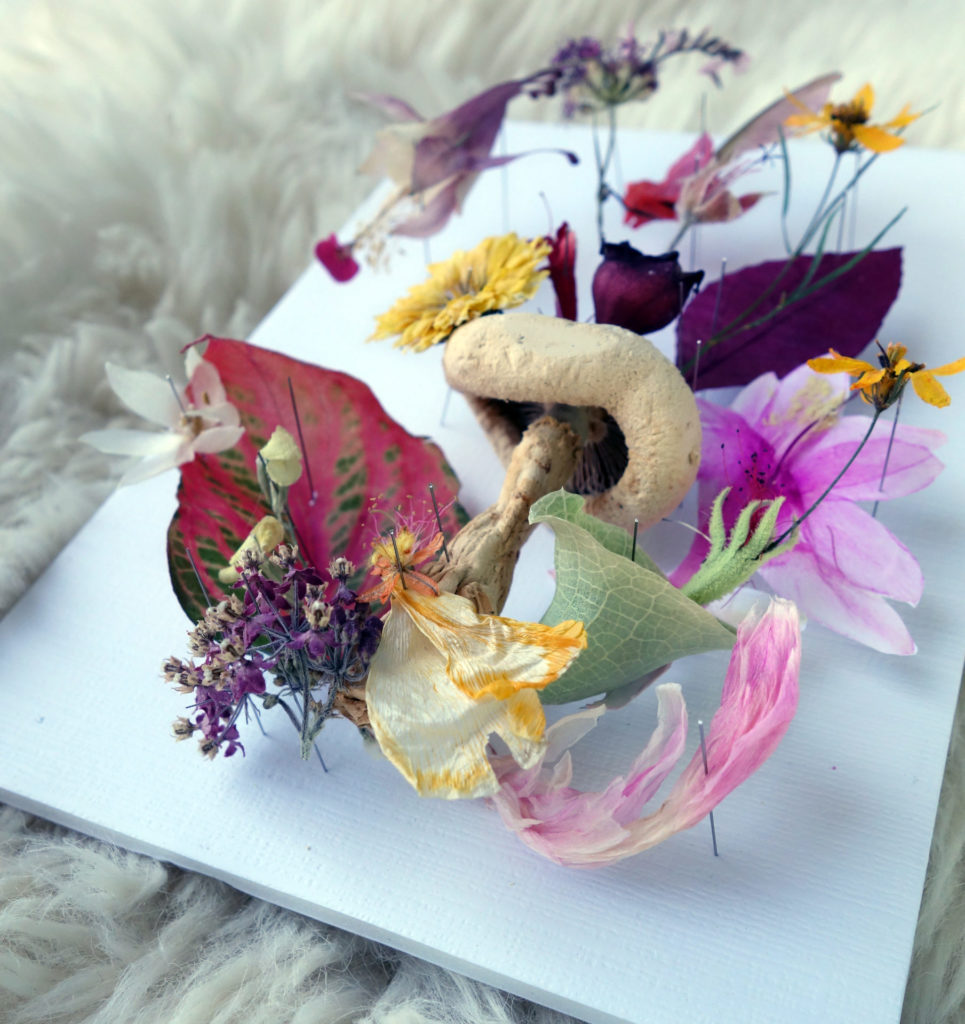
SP: Do you see yourself doing another community project like this or another form of collaboration in the future?
Hughes: This is a great question. There is no doubt it was a magical experience and I knew it was going to be a lot of work when I wrote out the proposal. To be honest, the team — Julia Pollack, Wendy Dorman, and Nathan Westerman — was so amazing. They made everything stress free and fun, and their expertise and commitment were what really made it a successful project. But at the end of the day, it was a lot of work.
I would definitely like to do another community project, but I don’t know if it will take the exact same format.
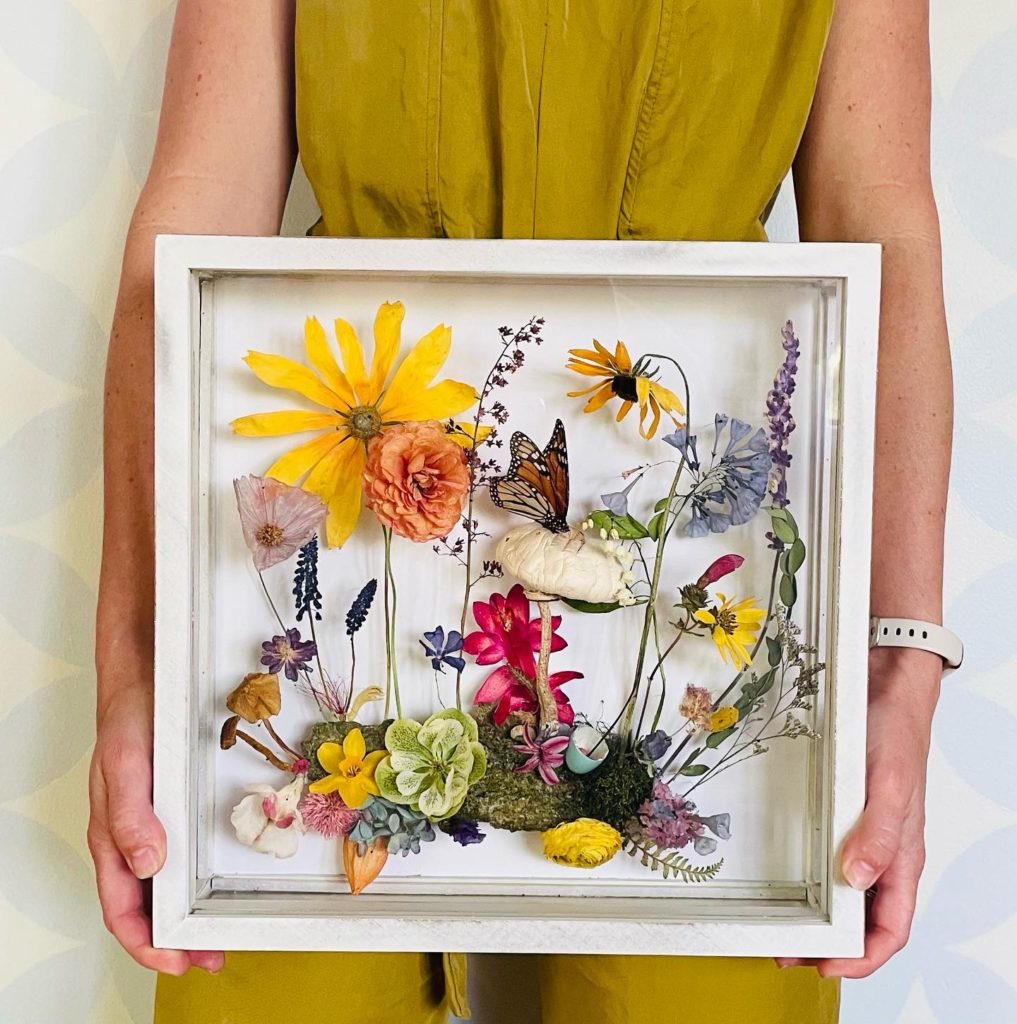
SP: Even though the project is done, can people still donate foraged items to you for your artwork? If so, is there anything special they should know as they gather?
Hughes: Absolutely! This is really what inspired me to do the project from the get go, folks reaching out with cool nature-y things they wanted to give me for my art form. In terms of gathering advise, be safe and be responsible! Don’t over forage a particular area or plant so that things have a chance to group back the next year. There are some good apps out there for plant identification, such as PictureThis.
You can check out some of Hughes’ work at CU Flower House, Bohemia, and the Blue Dragonfly Café at Allerton Park, or on her website or social media.








